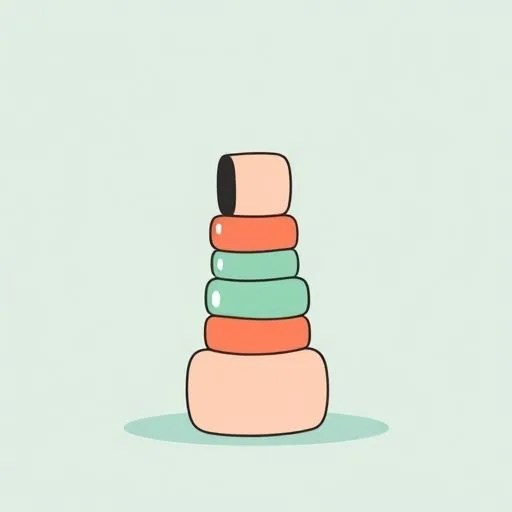
Look outside, friends – that soft drizzle’s kissing our city’s glass towers today, 22.7 degrees of perfect sweater weather. Funny how these gray days feel like the universe whispering: Slow down. Breathe. Just this morning, my 7-year-old daughter in second grade – when socks become superhero capes and every puddle’s an ocean – was building Lego towers taller than her chair. When it collapsed (again!), she didn’t cry. She grinned and shouted, ‘Appa, let’s make it better!’ Suddenly, I wasn’t just watching play. I was staring at the heart of what we’re all wrestling with: this wild AI revolution. Not in boardrooms—but right here, in our living rooms, over spilled barley tea. Because let’s be real: when we hear ’AI transformation,’ we don’t think spreadsheets. We think: Will my child’s wonder survive this digital tsunami?
When Towers Fall: Your Child’s Playtime Holds the Blueprint We’re Missing

Remember that Deloitte podcast buzzing about ‘AI igniting transformation’? How companies feel stuck between hype and hope? I laughed out loud – not at them, but with them. Because last Tuesday, my daughter’s Lego empire crumbled for the tenth time. And her reaction? Pure genius. No panic. Just, ‘Maybe we need more base blocks, Appa!’ That’s the exact energy our workplaces need.
See, the big secret nobody’s shouting from rooftops? Real transformation isn’t about lightning-speed tech swaps—it’s about the messy, joyful grind of rebuilding after failure. I read that almost half of leaders feel AI is now part of their plans. I also saw a report that over 40% of AI projects are abandoned. Maybe it’s because we treat AI like a magic wand instead of a patient teammate. My daughter gets this instinctively. She doesn’t scream when Legos tumble. She asks, ‘What did we learn?’
Yesterday, we tried an ‘AI drawing game’ – I’d describe a silly creature (‘a rabbit riding a dragon!’), and we’d both sketch it. Her version? Wild, heart-melting, full of unexpected colors. Mine? Technically cleaner… but lifeless. That’s our corporate struggle in a nutshell! We chase ‘perfect’ digital models while our kids remind us: the magic is in the human messiness. When companies abandon AI projects, it’s often because they forgot to value those wobbly first attempts—the toddler-steps toward brilliance. Let’s protect that spirit in our kids. Instead of ‘screen time rules,’ try ‘creative co-piloting’: ‘Honey, want to design a robot friend for your dolls using this free app? We’ll build the story FIRST.’ That’s how we raise human-led innovators—not AI-phobic kids.
The Hidden Superpower in Our Neighborhood Playground

You know what I love about walking to school here? That moment when the playground gate swings open. Every child dashes straight to their favorite spot – the slide whisperers, the sandbox architects, the jump-rope generals. No manager assigned roles. No ‘AI transformation roadmap’ pinned to the monkey bars. Just pure, self-directed passion. And yet? They build more resilient communities in 30 minutes than most corporations do in 3 years.
This McKinsey study keeps hitting me: ‘The challenge of AI isn’t technology – it’s rewiring companies for *human* change.’ Translation? Stop obsessing over chatbots. Start nurturing what our city’s kids model daily: trust. When my daughter shares crayons without hesitation, she’s mastering collaborative intelligence no LLM can replicate. Yet global surveys show 1 in 3 companies still treat AI like a solo ‘efficiency tool’ – not a playground for team creativity.
Here’s my radical parenting experiment this week: I asked my girl to ‘train an AI’ using leaves from our morning walk. ‘Teach it to recognize happy shapes!’ We sorted maple stars from oak hearts, laughing at ‘incorrect predictions’ (a pinecone labeled ‘dinosaur egg’!). Suddenly, tech felt warm. Human. This is how we future-proof our children – not by fearing AI, but by making it *playful*. At dinner last night (bulgogi on rice paper – her latest fusion craze!), she declared: ‘Appa, real super-agents have friends who help them learn.’ Exactly, my love. Exactly. Imagine if workplaces embraced that wisdom: AI as the ‘new kid on the team’ who needs human buddies to grow. No more ‘digital transformation’ anxiety – just joyful co-creation, one shared crayon at a time.
Your Quiet Rebellion Against the ‘Perfect Parent’ Myth

That foggy vibe outside? It’s a gift. Overcast days don’t demand Instagram-perfect picnics. They invite *real connection* – steaming tteokbokki at home, stories swapped like old coins. Yet we all feel the pressure, right? The fear that slow drizzle means we’re ‘falling behind’ in the AI race. News flash: Our children aren’t falling behind. They’re building super-agency in ways no algorithm can measure – in puddle-jumping imagination, in scraped-knee resilience.
When I hear CEOs talk about ‘transformative AI impact,’ I think of my daughter’s backpack. Halfway to school, she always dumps ‘unimportant’ rocks and drawings. Why? To make space for something unexpected – a friend’s lost marble, a shiny acorn. Business leaders, take notes: Sustainable AI adoption isn’t about cramming more tech into existing systems. It’s about conscious unburdening. Stop trying to ‘optimize’ every parenting moment. Protect those messy spaces where creativity blooms: the unstructured play after school, the ‘boring’ bus-ride chats, the quiet pride in a slightly lopsided clay cup.
So here’s my pledge to you, neighbor: This week, let’s try something revolutionary. Measure progress not by ‘AI literacy milestones’ but by genuine belly laughs.
When my girl taught our phone’s assistant to sing ‘Gangnam Style’ wrong (‘Oppa galloping horse!’), we crowned it ‘Family AI of the Week.’ Not because it’s accurate – because it’s hers. That’s how we raise humans who’ll outshine any machine: by guarding their right to joyful experimentation. Because in the end, whether in boardrooms or playgrounds, the most future-proof skill isn’t coding – it’s the courage to say, ‘Let’s rebuild it better.’ And if you need proof? Just ask the Lego expert sleeping with dinosaur drawings tonight. Her tower’s already rising again – taller, wilder, filled with space for friends. Now that’s transformation.
